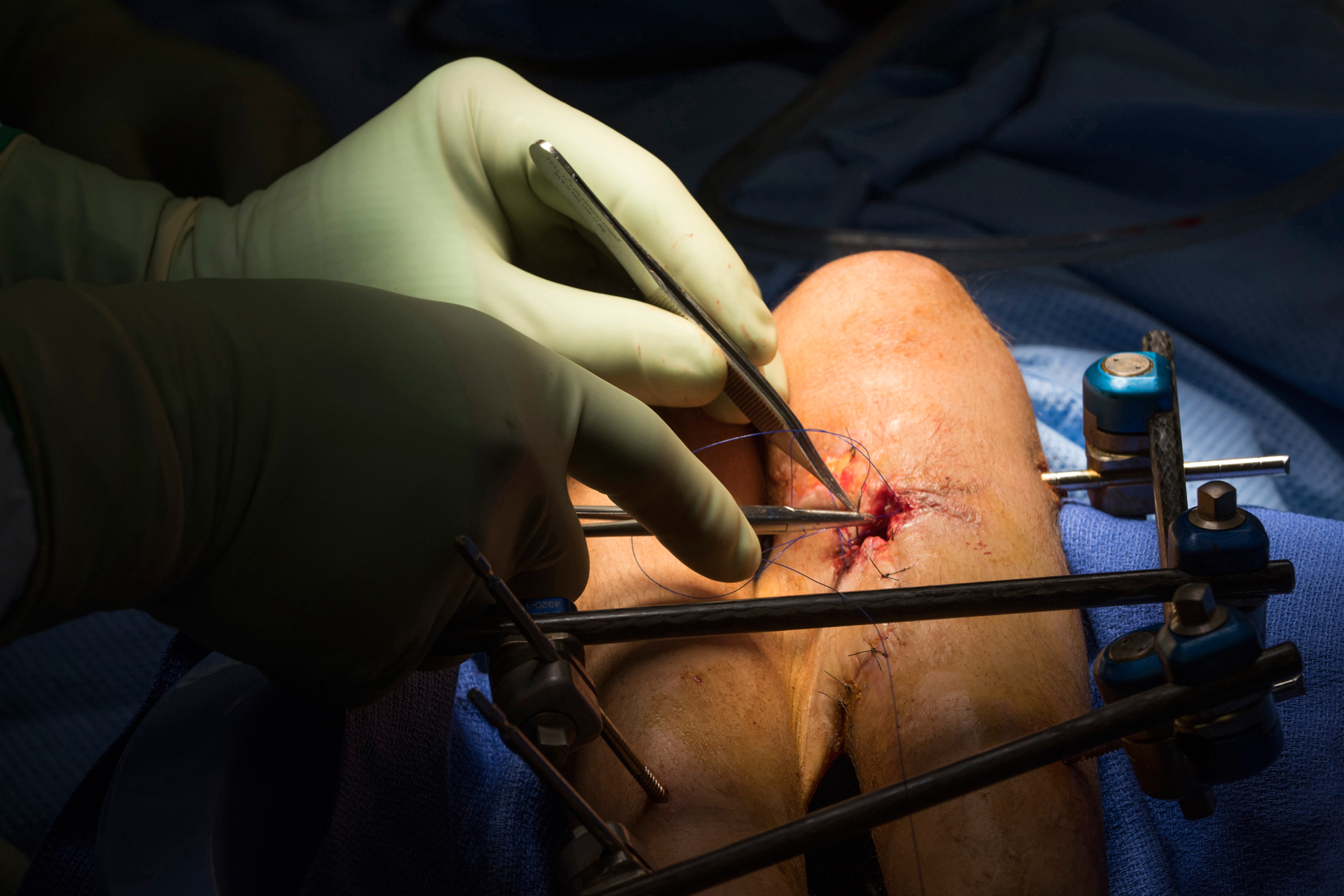
Imagine being able to turn exposed muscle cells into skin cells to help cover a wound.
Scientists at the Air Force Research Lab are looking at ways to “reprogram” a person’s cells to heal wounds more than five times faster than normal, the service said in a Jan. 28 release.
In partnership with the AFRL, Dr. Indika Rajapakse, associate professor of computational medicine and bioinformatics, and of mathematics, at the University of Michigan, is using a live cell imaging microscope paired with a mathematical algorithm to study whether a cell can be altered to speed up the healing process, according to the release.
Read Next: ‘Beijing Biden Is Not My President:’ Troops’ Social Media Posts in Spotlight After Capitol Riots
Rajapakse and Col. Charles Bris-Bois, the Air Force‘s disruptive technology program team lead, are analyzing real-world injury treatments, such as burn healing, skin grafts and organ transplants.
The hope is to save lives during combat or aeromedical evacuations and improve troops’ longevity.
“There are amazing opportunities in the United States, that you don’t see in the rest of the world, to humanize science and meet critical needs in medicine,” Rajapakse said in the release. The project was made possible through funding from the AFRL’s Air Force Office of Scientific Research in Arlington, Virginia.
“We have the resources to do this, and it is our obligation to take full advantage of them,” he said.
The process of reprogramming a cell modifies its genome, or its genetic material. This is done using proteins, called transcription factors, that hasten or stop different genes “to regulate activities such as cell division and growth, and cell migration and organization,” the release states.
The genetic sequence can be rewritten so that it turns into a different type of cell. For example, a reprogrammed skin cell can become a muscle cell or a blood cell. The algorithm helps “predict the points in the cell cycle where transcription factors can best affect the desired change,” the release explains.
With the right transcription factor sequences, Rajapakse found wounds can heal faster using the new process.
The next step is to make the technology usable in a real-world setting.
“The envisioned technology would act like a ‘spray-on’ bandage, applying transcription factors directly to wounds,” the release states. “This method would convert exposed deep muscle cells into surface skin cells, which would mean a higher probability of successful healing than the current methods of skin grafting.”
Researchers, doctors and biotechnicians at the U.S. Army Institute of Surgical Research at the Brooke Army Medical Center in San Antonio have looked at similar science.
In 2012, the institute began researching ways to patch up burn victims on site, including spray-on skin.
“They’re developing artificial skin, or skin that comes from just a very small piece of a person’s skin, and then can be made into a large amount, and then be put into a spray bottle,” Brig. Gen. Jeffrey Johnson, then-commanding general of Brooke Army Medical Center, said in 2016. Johnson moved on from that post in 2018.
The sprayed-on skin would regenerate and grow as it is applied to the surface of the body, Johnson said at the time.
— Oriana Pawlyk can be reached at [email protected]. Follow her on Twitter at @Oriana0214.
Related: It’s Raining Blood: Air Force Tests New Way to Resupply Battlefield Medics
© Copyright 2021 Military.com. All rights reserved. This material may not be published, broadcast, rewritten or redistributed.
